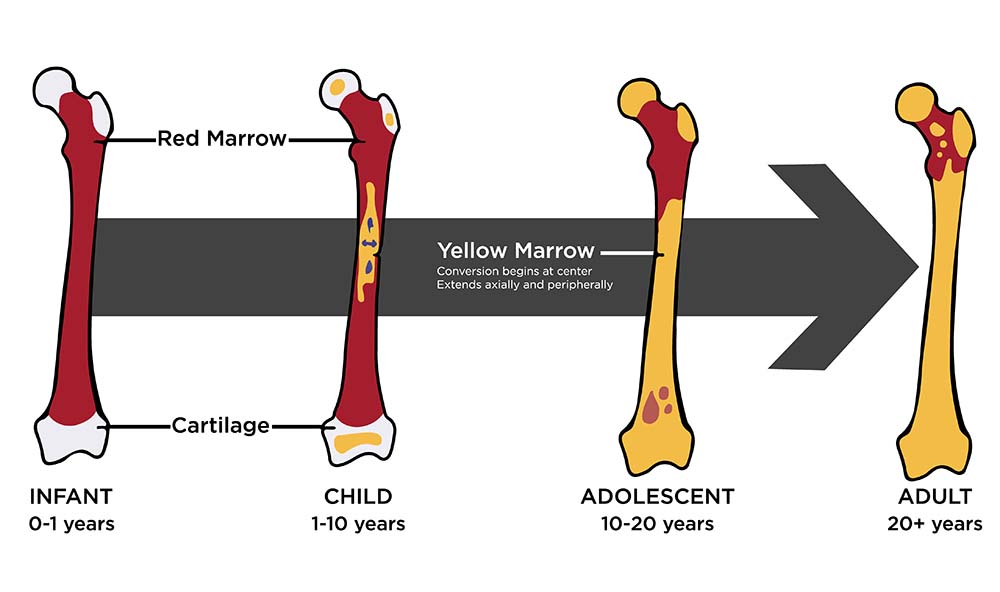Bone Marrow
Birthplace of the blood
Also known as myeloid tissue, bone marrow is a gelatinous material found within the spongy interiors of bones and primarily responsible for the generation of blood cells in mammalian and avian species. Most generally, bone marrow is sub-categorized as either red or yellow depending on composition, function and location.
Red marrow
- Delicate, fibrous tissue; highly vascularized
- Produces all blood cells
- Assists liver and spleen in hemolysis (destruction) of old or damaged blood cells
- Contains stem cells that differentiate into various precursor blast cells that in turn give rise to mature cells:
- Normoblasts become erythrocytes or red blood cells (RBCs)
- Myeloblasts become leukocytes or white blood cells (WBCs)
- Megakaryocytes become platelets (cell fragments involved in clotting)
- In adults, remains only in the vertebrae, breastbone, hips, ribs and skull, and at the ends of long bones of the arms and legs
Yellow marrow
- Primarily functions as a repository for fats
- Not found until after about age seven, when fat tissue begins to replace much of the red marrow no longer needed for high-volume blood production
- Can convert back to red marrow in demanding conditions such as severe fever or blood loss
- In adults, is the exclusive component of cancellous (spongy) bones and the central cavities of the long bones

Transplants and stem cell therapy
Bone marrow is sensitive tissue, and can be easily damaged by radiation therapy and certain anticancer drugs. Such treatments can therefore impair blood production and leukocyte-mediated immunity, requiring marrow transplants from healthy donors that help remedy immune deficiencies and the dysfunctions caused by leukemia and other hematological disorders.
When immunologically matched to a recipient, multipotent bone marrow stem cells (BMSCs) are used with considerable success to treat disease and regenerate tissue. BMSCs can regenerate and restore:
- Brain tissue
- Craniofacial tissue
- Diaphragm tissue
- Liver tissue
- Erectile function
- Damaged pathways for monocyte transdifferentiation
In some of the most promising outcomes, BMSC treatments can actually cure conditions such as hepatitis-C, HIV and cancer.
References
Bone Marrow. Encyclopedia Britannica. Available from URL: https://www.britannica.com/.
Hemolytic Anemia. National Heart, Lung, and Blood Institute. https://www.nhlbi.nih.gov/.
Mahla, Ranjeet S. Stem Cells Applications in Regenerative Medicine and Disease Therapeutics. PubMed Central, National Center for Biotechnology Information. Available from URL: https://www.ncbi.nlm.nih.gov/pmc/.
Understanding Stem Cell Transplants for Blood Cancers. WebMD. Available from URL: https://www.webmd.com/.

